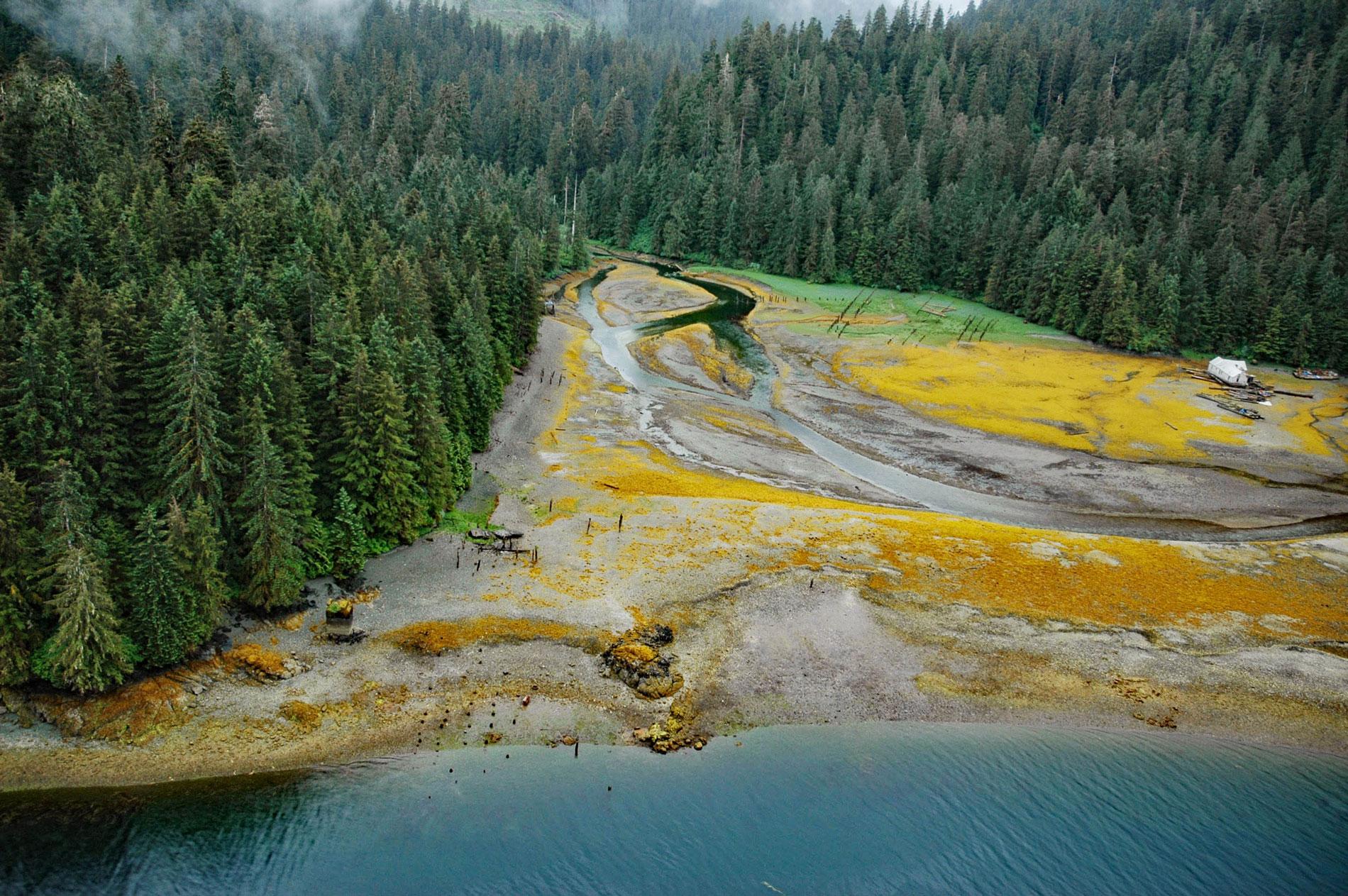Chomly is the site of a historic cannery and settlement situated on the south shore of West Arm Cholmondeley Sound on Prince of Wales Island, 28 miles (45 km) west-southwest of Ketchikan and 20 miles (32 km) east-northeast of Hydaburg, Alaska. The cannery name was shortened from ‘Cholmondeley’ to ‘Chomly’ when a post office was established in 1900. Cholmondeley Sound is a deglaciated fjord that extends generally west for 19 miles (31 km) from Chasina Point on Clarence Strait. The fjord was named in 1793 by Captain George Vancouver for Hugh Cholmondeley, 1st Earl of Cholmondeley. The embayment is mostly formed by partially metamorphosed sedimentary and volcanic rocks representing the Alexander terrane. The rocks were originally basaltic to andesitic pillow lava flows, pillow breccia, and tuff breccia, greywacke and mudstone, which were metamorphosed by igneous intrusions during the middle Cambrian to Ordovician into greenschist, greenstone, quartz-white mica schist, and marble. The fjord is a typical U-shaped glacial valley with two submerged recessional moraines, one at Chasina Point and the other adjacent to Chomly, that suggest at least two Late Pleistocene glacial advances.
Southern Prince of Wales Island is inhabited by the Kaigani Haida who migrated from Langara Island in the Queen Charlotte Islands of British Columbia in the late 17th and early 18th centuries. At the time of the migration the entire island was the territory of Tlingit people. The migration is attributed to a shortage of subsistence resources in the Queen Charlotte Islands, specifically the lack of salmon streams and herring spawning areas. There were at least 6 migrations to Prince of Wales Island, the earliest involved the Yadas and Taslanas clans that first settled at Cape Chacon, and then continued north along the east coast of the island where the Yadas apparently stopped at Chasina Point and the Taslanas settled at Kasaan. The settlement at Chasina Point was known as Chasintsev and Admiralty charts from the Russian America period showed three large buildings at this site but the residents eventually moved to Kasaan. The village was frequently visited by maritime fur traders in the early 19th century including Captain Samuel Hill on the Lydia and later the Otter, Captain William Sturgis on the Caroline, Atahualpa, Captain James Bennett on the Volunteer, Captain Lemuel Porter on the Mentor, and Captain John Meek on the Pedler.
The Chomly cannery was built in 1912 by Alaska Pacific Fisheries who were using 80 purse seines in Cholmondeley Sound by 1914. In 1922, the facility was taken over by Alaska Consolidated Canneries, and in 1929, the cannery was sold to Alaska Pacific Salmon Corporation. The cannery closed in 1930. A video of Alaska salmon canneries in the 1930s is here. The burgeoning salmon industry in the Pacific Northwest created a demand for labor that was supplied mostly by immigrants. By the 1920s, the Filipino American community at Chomly was well developed and one notable characteristic was the heavy use of journalism to strengthen their community and overcome obstacles. The central figure was Victorio A. Velasco, who immigrated to the United States in 1924. Velasco edited, wrote, and published several different Filipino community newspapers including the Chomly Spectator. The format was a stack of loose-leaf sheets often featuring a hand-drawn cover. The Chomly Spectator discussed a variety of topics, including relations with white foremen and the expected fish harvest. Read more here and here. Explore more of Chomly and Cholmondeley Sound here:

